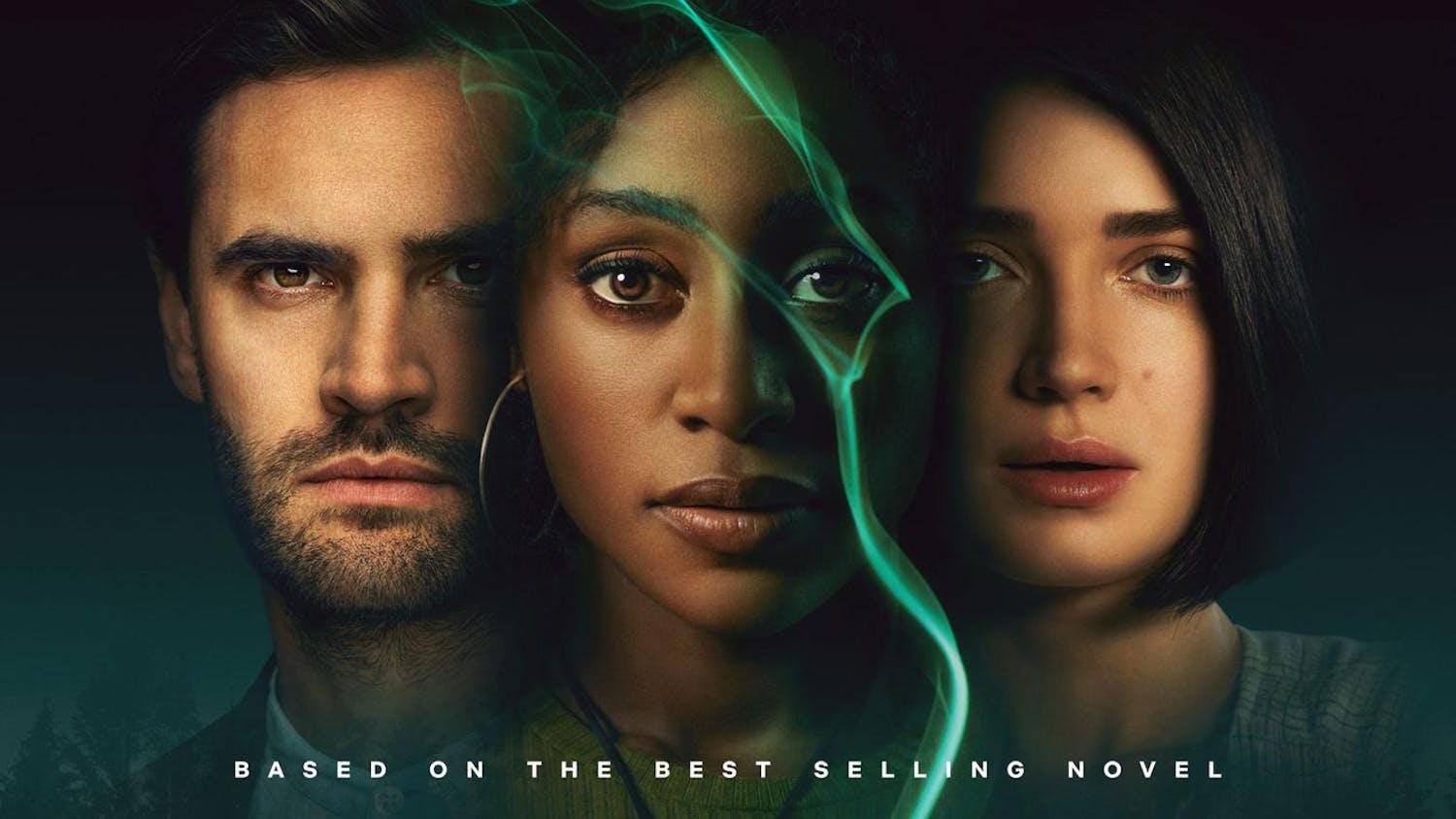Convergence, Rebecca Rutstein’s exhibit on view at the John Hartell Gallery in Sibley Dome, is full of visual paradoxes that play with the eye, mind and soul. One glance into the gallery space draws the viewer into a state of total optical stimulation, complete with an experience that includes captivatingly rhythmic patterns and whirlwinds of unexpected colors. A deeper look at the collection prompts a realization of the true genius of visual contradiction, all skillfully created by Rutstein.
Rutstein, a Cornell alumna (M.F.A. class of 1993) has participated in ocean mapping expeditions that spanned from the Galapagos Islands to California and from Vietnam to Guam. Convergence is fundamentally inspired by the ocean maps, geography, geology and water of these trips. Common themes in the collection include natural processes, natural ebb and flow of elements, geometric inspiration and causal relationships.
Several visual aspects of Convergence are astonishingly striking. Rutstein is most impressively able to use such bold, artificial and bright pastel colors to express the feeling of the most natural processes that occur in nature without a sense of kitschiness. She unabashedly uses neon pinks, electric blues, highlighter yellows and lime greens to color her sophisticated patterns. For example, the piece “Bold As Love II” (2015) is certainly as bright as love. The greens and pinks are unexpectedly paired with grays which creates a sense of cosmic depth that strangely simplifies the complexities of feeling and emotion. Texture itself is created by the facet-like pairings of geometric shapes that reminded me of cut gems; I felt a sense of depth after taking a step back, noticing the voids of color in the mosaic-like model layered on top of the textured brush strokes in the background. A structured pastel dream was laid out in front of me, pulsating with color and shape.
Rutstein was not only able to play with color exquisitely, but also was able to masterfully experiment with movement and rhythm in her pieces. “Galapagos III” (2017) exemplifies these artistic elements. The black, white and blue contour lines are net-like, as if to mimic a rippling net under the sea, catching the viewer and dragging her to the bottom left into the void. The loose strands of the frayed net ends billow and trail above and to the right, lingering behind as we’re taken for a ride, inextricably caught for the ride. Yet, there was no violent or harsh aspect, only the feeling of the hauntingly calm loneliness of being under water remained. The pattern created by the contour lines in this piece was similar to those of “Under the Stars” (2017) and “I’m Leaving Now” (2016) in that Rutstein miraculously was able to make patterns seem unpredictable. They had the quality of repetition, but were interrupted by layering or unexpected color and value change. The overall effect made me look twice, enraptured and quite taken aback by the apparent inconsistency.
The common stylistic theme of using clean, technical and almost map-like linear elements permeated throughout the collection as well. In fact, the paradox exists in that these sharp lines combined to create an organic and looser feel. This idea is particularly evident in “Galapagos III” (2017) and “Galapagos IV” (2017), where stepping in and examining these pieces closer would reveal the grid-like lines; yet, stepping back and taking second look would unveil a more contoured, flowing configuration. Pieces like “We’ve Had Some Dark Days” (2015) and “See A Little Light” (2017) mimic latticework and perhaps sea coral. The deliberate shapes work together to become a cohesive composition. Perhaps Rutstein’s intention is to comment on how small parts build relationships with one another to build a whole network wholly and integrally different from its building blocks.
I was marvelously and deeply conflicted by the overall effect of the collection. On the one hand, the complex patterns, implicit movements and bright popping colors were extremely dynamic and stimulating; but on the other hand, the unexpected pattern interruptions, two dimensional design and the pairings of the bright colors with more neutral, pastel ones created a truly intriguing sense of muted playfulness.
Essentially, Convergence embodied the spirit of a new world where competing vivid colors cooperated with more muted tones, shapes were more simplified but perplexing, movement was more powerful but intrinsically tranquil and 2D design possessed depth and full bodied structure. The desperately beautiful aesthetics combined with the visual tug-of-war leaves the viewer sighing and strangely at peace, pondering about the desperately beautiful world she’d entered.
Sabrina Wong is a freshman in the College of Arts and Sciences. She can be reached at sw644@cornell.edu.

Rebecca Rutstein’s Convergence: Visual Contradictions
Reading time: about 5 minutes
Read More










